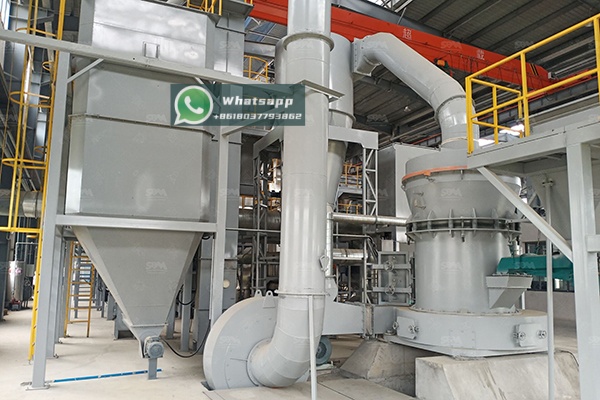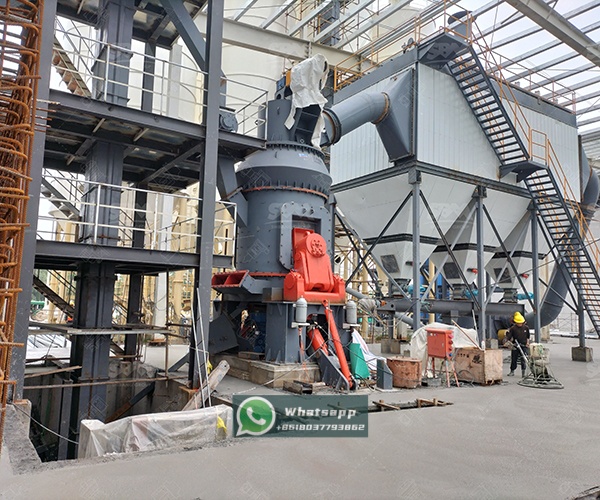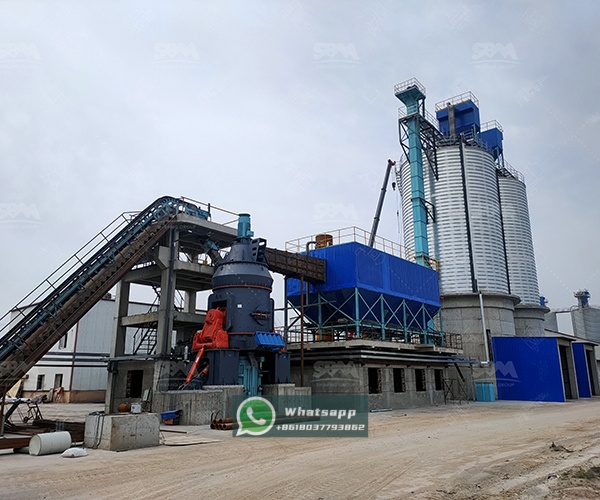The steel industry relies heavily on efficient and reliable grinding solutions for various raw materials, with anthracite being one of the most critical. Anthracite, a hard and compact variety of coal with high carbon content and few impurities, is widely used as a carbon additive in steel production. Proper grinding of anthracite to specific fineness is essential for optimizing the steelmaking process, improving product quality, and reducing production costs. This article explores the technical requirements for anthracite grinding in steel applications and examines why vertical grinding mills represent the optimal solution.
In steel manufacturing, anthracite serves multiple crucial functions. As a carbon raiser, it helps achieve the desired carbon content in molten steel, while its low volatile matter and high fixed carbon content make it ideal for this application. The efficiency of anthracite in steel production directly depends on its particle size distribution and fineness. Improperly ground anthracite can lead to inconsistent carbon content, increased consumption rates, and ultimately, compromised steel quality.
The grinding process must achieve a precise balance between production capacity and particle size control. Anthracite typically requires grinding to a fineness between 170-45 microns (80-325 mesh) for optimal performance in steel applications. This specific size range ensures rapid dissolution in molten metal while minimizing dust losses during handling and transportation.

Anthracite presents unique challenges in grinding operations due to its physical properties. With high hardness (typically 2.5-3.5 on the Mohs scale) and abrasive nature, anthracite can cause significant wear on grinding components. Additionally, its low moisture content requires careful consideration of drying capabilities within the grinding system. Traditional grinding equipment often struggles with these challenges, resulting in high maintenance costs, inconsistent product quality, and excessive energy consumption.
The steel industry’s continuous operation demands grinding equipment with high availability and minimal downtime. Any interruption in the supply of properly ground anthracite can disrupt the entire steel production process, leading to substantial financial losses. Therefore, the selection of appropriate grinding technology becomes paramount for steel producers.
Vertical grinding mills have emerged as the preferred technology for anthracite grinding in the steel industry due to their superior efficiency, reliability, and operational flexibility. Unlike traditional ball mills or Raymond mills, vertical mills integrate multiple functions—including crushing, grinding, drying, classification, and material conveyance—into a single compact unit.
The fundamental working principle involves material being fed into the center of a rotating grinding table, where centrifugal force moves it outward under grinding rollers. The ground material is then transported by air to a classifier, which separates particles according to size. Oversized particles return to the grinding table for further processing, while properly sized material proceeds to collection.

Shanghai Zenith Machinery Co., Ltd. has established itself as an excellent manufacturer of ore grinding equipment in China, with remarkable achievements in the field of ultra-fine powder grinding. Specializing in the research, development, and production of industrial powder grinding equipment, Zenith offers comprehensive solutions tailored to the specific needs of the steel industry.
With years of experience and continuous innovation, Zenith has developed a range of vertical grinding mills that perfectly address the challenges of anthracite grinding. Their equipment combines advanced engineering with practical operational features, ensuring optimal performance in demanding industrial environments.
For anthracite grinding applications in the steel industry, Zenith’s LM Vertical Coal Mill series represents an ideal solution. Specifically designed for grinding coal and similar materials, these mills incorporate features that make them particularly suitable for anthracite processing.
The LM Vertical Coal Mill offers several advantages for anthracite grinding:
The technical parameters for the LM Vertical Coal Mill series are as follows:
| Model | Plate diameter (mm) | Capacity (t/h) | Max feed size (mm) | Main motor (kW) |
|---|---|---|---|---|
| LM130M | 1300 | 10-17 | <38 | 185 |
| LM220M | 2200 | 35-50 | <50 | 500 |
| LM280M | 2800 | 60-90 | <50 | 900 |
For steel producers requiring ultra-fine anthracite powder for specialized applications, Zenith’s LUM Ultrafine Vertical Mill offers exceptional performance. This advanced grinding system integrates grinding, drying, classifying, and transportation functions while occupying minimal space.
The LUM series features several technological innovations:
Technical parameters for the LUM Ultrafine Vertical Mill:
| Model | Main machine power (kW) | Capacity (t/h) | Size distribution D97 (μm) |
|---|---|---|---|
| LUM1525 | 220-250 | 1.6-11.5 | 5-30 |
| LUM1632 | 280-315 | 2.0-13.5 | 5-30 |
| LUM1836 | 355-400 | 2.3-15 | 5-30 |
The implementation of Zenith’s vertical mills in steel plant anthracite grinding operations delivers significant operational advantages. The integrated drying system eliminates the need for separate drying equipment, reducing both capital investment and operational costs. The compact design saves valuable floor space in already crowded industrial settings, while the low vibration and noise levels contribute to a better working environment.
From a maintenance perspective, these mills offer exceptional accessibility to key components, reducing downtime for routine inspections and part replacements. The robust construction and use of wear-resistant materials ensure extended service life even when processing abrasive materials like anthracite.

While the initial investment in advanced vertical grinding technology may be higher than traditional solutions, the total cost of ownership typically proves significantly lower. The energy efficiency of Zenith’s vertical mills can reduce power consumption by 30-50% compared to ball mills of similar capacity. Additionally, the reduced wear part consumption and lower maintenance requirements contribute to substantial operational savings over the equipment’s lifetime.
For steel producers, the consistent quality of ground anthracite directly translates to better control over steel composition and properties, potentially leading to premium product pricing and enhanced market competitiveness. The reliability of these grinding systems also minimizes production disruptions, ensuring a steady supply of carbon additive to the steelmaking process.
Modern steel production faces increasing pressure to minimize environmental impact, and grinding operations are no exception. Zenith’s vertical mills incorporate multiple features that support environmental compliance and sustainability goals. The closed-system design effectively contains dust, while advanced bag filters ensure emissions remain well within regulatory limits. The energy-efficient operation not only reduces operating costs but also lowers the carbon footprint of the grinding process.
Furthermore, the ability to precisely control particle size distribution helps optimize anthracite utilization in steel production, reducing waste and maximizing resource efficiency. These environmental benefits align with the steel industry’s broader sustainability initiatives and corporate responsibility objectives.
The grinding of anthracite for steel production demands specialized equipment capable of handling this challenging material while meeting the stringent requirements of continuous industrial operation. Vertical grinding mills from Shanghai Zenith Machinery represent the state-of-the-art in anthracite processing technology, offering unparalleled efficiency, reliability, and operational flexibility.
Whether through the robust LM Vertical Coal Mill series for standard applications or the advanced LUM Ultrafine Vertical Mill for specialized requirements, Zenith provides solutions that optimize both technical performance and economic viability. As the steel industry continues to evolve toward higher efficiency and sustainability, partnering with experienced equipment manufacturers like Shanghai Zenith Machinery becomes increasingly crucial for maintaining competitive advantage.
By selecting appropriate grinding technology and leveraging Zenith’s expertise in powder processing, steel producers can significantly enhance their anthracite grinding operations, ultimately contributing to improved steel quality, reduced production costs, and strengthened market position.